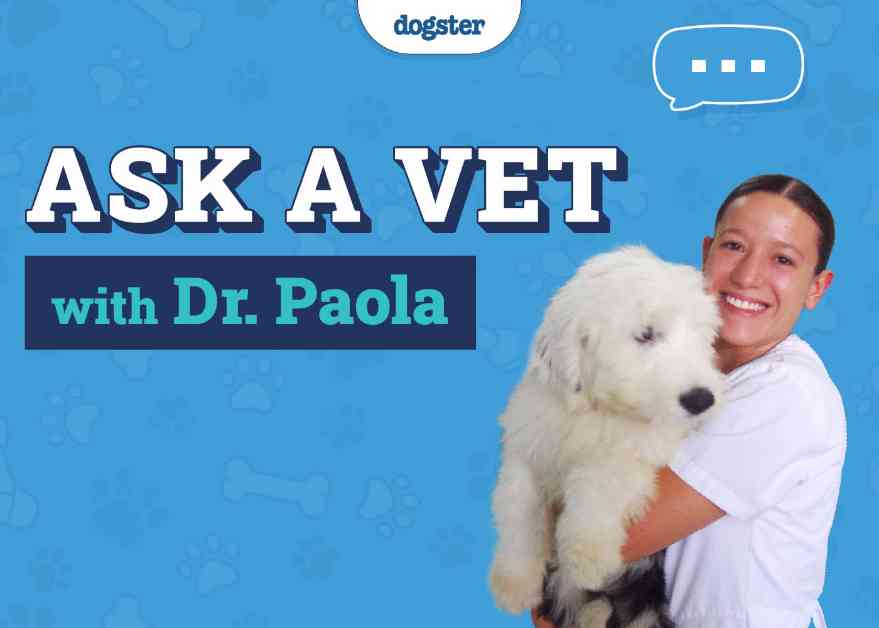Dr. Paola Answers Your Dog Questions
Welcome to our “Ask Dr. Paola” series, where every Monday we bring expert advice straight from Dr. Paola Cuevas (MVZ) to help our readers better understand their dog’s health and well-being. Whether you’re a new pet parent or a seasoned dog lover, Dr. Paola is here to provide answers to your most pressing questions. From nutrition tips and preventive care to troubleshooting common behavioral issues, Dr. Paola is ready to offer insights that will keep your furry friend happy and healthy.
Help! My Dog Is Changing Color!
Madelyne reached out to Dr. Paola with concerns about her 5-month-old miniature poodle, Moxie, whose red coat had unexpectedly turned blonde after a few shampoos. Dr. Paola reassured Madelyne that this color transition is a normal phenomenon among red Poodles due to genetic factors. While some red Poodles retain their rich color, others may experience fading or lightening as they mature. This process, known as “clearing,” can result in shades of apricot, cream, or silvering in some lines.
Dr. Paola advised Madelyne that there is no magic shampoo or supplement that can completely reverse this genetic fading. However, she recommended looking into color-enhancing pet shampoos specifically formulated for red or apricot coats, which claim to intensify remaining pigment without the use of harsh chemicals. Dr. Paola also highlighted the role of nutrition in maintaining coat health, suggesting a diet rich in omega-3 and omega-6 fatty acids to enhance the shine and richness of Moxie’s coat.
For Madelyne, Dr. Paola’s expert advice shed light on the natural color changes that some Poodles undergo, offering reassurance and guidance on how to care for Moxie’s evolving coat.
Help! My Dogs Can’t Seem to Get Along!
Wanda described the ongoing conflict between her two male long-haired Chihuahuas, Walter and Tripp, who seemed to constantly fight and exhibit aggressive behavior towards each other. Dr. Paola identified unresolved tension stemming from competition, resource guarding, and Walter’s past trauma as the root cause of their fights. She advised Wanda to avoid situations that trigger their aggression, such as picking one dog up in front of the other or favoring one over the other.
Dr. Paola recommended using baby gates or crates to create safe spaces and emphasized the importance of reinforcing calm behavior through structured activities like parallel walks, feeding at a safe distance, and controlled play. By focusing on impulse control training and reinforcing neutrality, Wanda could help Walter and Tripp rebuild their tolerance for each other and reduce their aggressive tendencies.
For Wanda, Dr. Paola’s insights provided a roadmap to address the underlying issues fueling the dogs’ conflicts, offering practical strategies to promote harmony and peaceful coexistence between Walter and Tripp.
Help! What Flea Treatment Should I Use?
Lydia sought advice from Dr. Paola on selecting the best flea treatment for her Shichon puppy, Chewie, in an area infested with ticks and chiggers. Dr. Paola emphasized the importance of consulting a veterinarian to determine the most suitable treatment for Chewie based on his unique health status, medical history, and specific needs. While she couldn’t recommend a specific product without a direct evaluation, Dr. Paola encouraged Lydia to explore available options and consult with a veterinarian familiar with the tick species in their area.
Dr. Paola highlighted the individualized nature of veterinary care and the importance of personalized recommendations to ensure safe and effective treatment for Chewie. She also suggested utilizing tele-triage veterinary services, such as PangoVet, to receive general guidance on Chewie’s condition and determine if urgent in-person care is necessary.
For Lydia, Dr. Paola’s guidance underscored the significance of tailored veterinary care in addressing Chewie’s flea and tick concerns, offering a pathway to informed decision-making and proactive health management for her beloved pet.





















